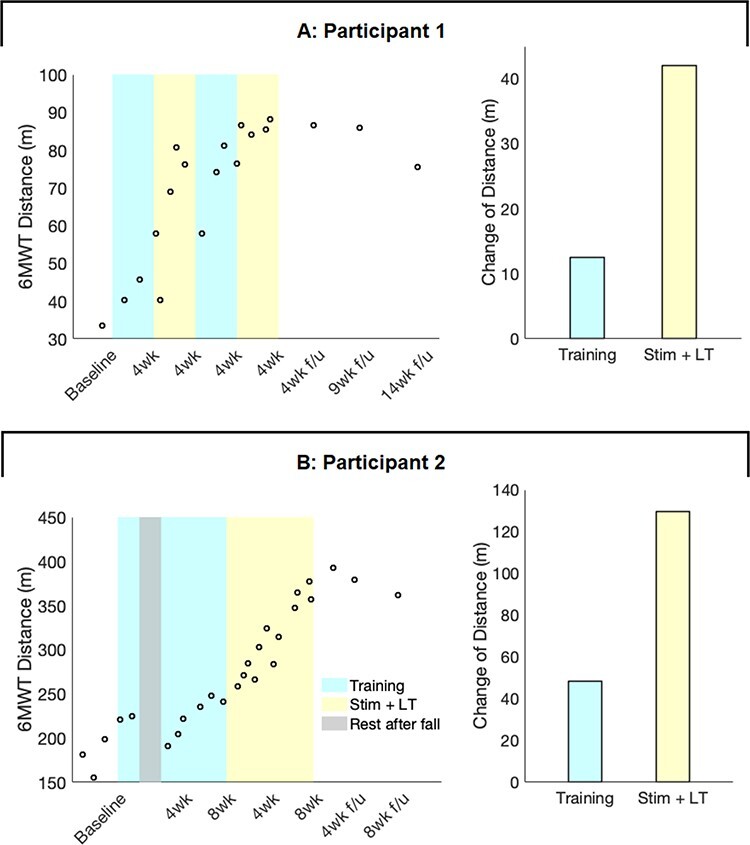Figure 3.

Sustained improvement of 6-minute walk distance. Transcutaneous spinal cord stimulation (tSCS) combined with intensive locomotor training enabled 2 participants to improve their 6-Minute Walk Test (6MWT) distance threefold more than during training alone. A: Participant 1 improved walking distance during the first 4 weeks of tSCS and maintained this improved function for at least 9 weeks without any further intervention (left). The bar plots show the change in walking distance that occurred during a total of 2 months of training alone (blue) and during 2 months of stimulation with training (yellow). The tSCS increased walking distance approximately threefold compared with training alone (+37% of baseline during training vs +124% of baseline during stimulation + training; right). B: Participant 2 demonstrated improvement of the 6MWT distance at a much faster rate during tSCS than locomotor training alone (left). The tSCS increased walking distance approximately threefold compared with training alone (+24% of baseline vs +65% of baseline; right). LT = locomotor training; Stim = transcutaneous spinal cord stimulation. Empty circles present the individual data points. Bar plots show the distance change in the phase of locomotor training alone (blue) and tSCS with locomotor training (yellow). Participant 2 had a fall during the second week of training alone phase and took a 1.5-month rest for recovery (gray). The distance change is the differences between the maximum distance in the previous phase and the maximum distance in the following phase. 6MWT minimally detectable change (MDC): 22% from baseline.75
